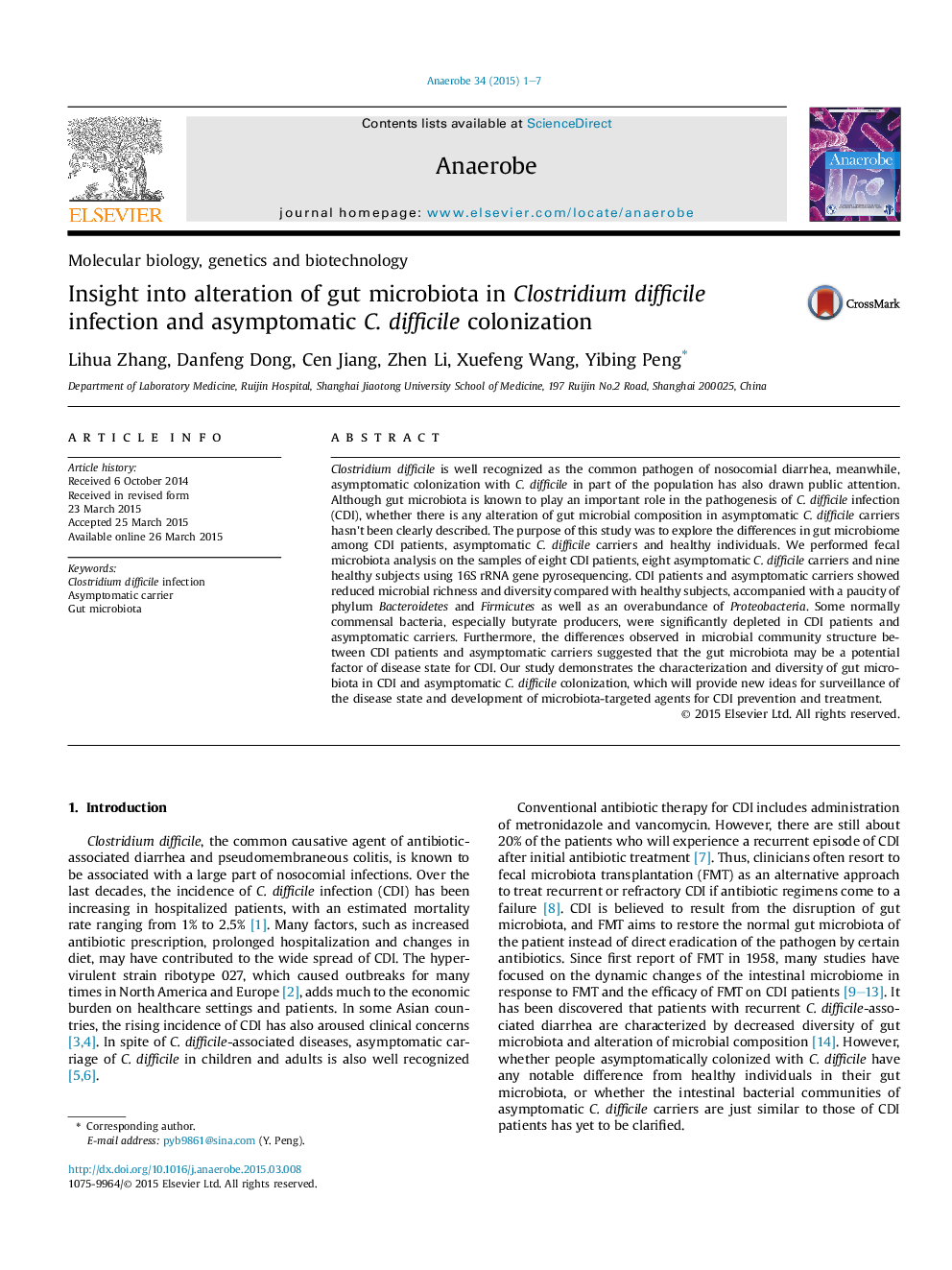| Article ID | Journal | Published Year | Pages | File Type |
|---|---|---|---|---|
| 3394946 | Anaerobe | 2015 | 7 Pages |
•Intestinal dysbiosis in CDI and asymptomatic Clostridium difficile colonization was studied.•Decreased microbial richness and diversity in CDI patients and C. difficile carriers.•Depletion or lack of butyrate-producing bacteria in CDI patients and C. difficile carriers.•Gut microbiota as a potential factor of disease state for CDI.
Clostridium difficile is well recognized as the common pathogen of nosocomial diarrhea, meanwhile, asymptomatic colonization with C. difficile in part of the population has also drawn public attention. Although gut microbiota is known to play an important role in the pathogenesis of C. difficile infection (CDI), whether there is any alteration of gut microbial composition in asymptomatic C. difficile carriers hasn't been clearly described. The purpose of this study was to explore the differences in gut microbiome among CDI patients, asymptomatic C. difficile carriers and healthy individuals. We performed fecal microbiota analysis on the samples of eight CDI patients, eight asymptomatic C. difficile carriers and nine healthy subjects using 16S rRNA gene pyrosequencing. CDI patients and asymptomatic carriers showed reduced microbial richness and diversity compared with healthy subjects, accompanied with a paucity of phylum Bacteroidetes and Firmicutes as well as an overabundance of Proteobacteria. Some normally commensal bacteria, especially butyrate producers, were significantly depleted in CDI patients and asymptomatic carriers. Furthermore, the differences observed in microbial community structure between CDI patients and asymptomatic carriers suggested that the gut microbiota may be a potential factor of disease state for CDI. Our study demonstrates the characterization and diversity of gut microbiota in CDI and asymptomatic C. difficile colonization, which will provide new ideas for surveillance of the disease state and development of microbiota-targeted agents for CDI prevention and treatment.
